The world's largest excavators and the importance of rubber tracks: 2025 update

The panorama of giant excavators has undergone an epochal transformation in 2025. The 900-ton Komatsu PC9000 represents the most advanced evolution of mining technology, joining the legendary 1,000-ton Caterpillar 6090 FS that has long dominated the ultra-heavy excavator category.
This titanic evolution demonstrates how track technology has become increasingly crucial for managing machines of extreme dimensions, where every component must guarantee performance, reliability and operational versatility.
The new hierarchy of giants
1st - Komatsu PC9000 (900 tons) – 2025 Novelty
The Komatsu PC9000 represents the pinnacle of modern mining engineering. This Japanese giant, with its 900 tons of operating weight, was specifically designed for large-scale extraction operations in Canada's oil sands mines.
The PC9000's technical specifications include an operating weight of 900 tons with an estimated bucket capacity of 50 m³. The machine is equipped with dual Cummins QSK78 engines that deliver 4,828 HP total, ensuring a travel speed of 2.0 km/h. The fuel tank has a capacity of 18,000 liters, while overall dimensions reach 24 meters in length, 10.8 meters in width and 12 meters in height. The excavator can dig up to 9.5 meters deep and lift loads up to 180 tons.
The first unit was delivered to Suncor Energy at the Fort Hills mine in Alberta in May 2025, marking the beginning of a new era for the global mining industry.
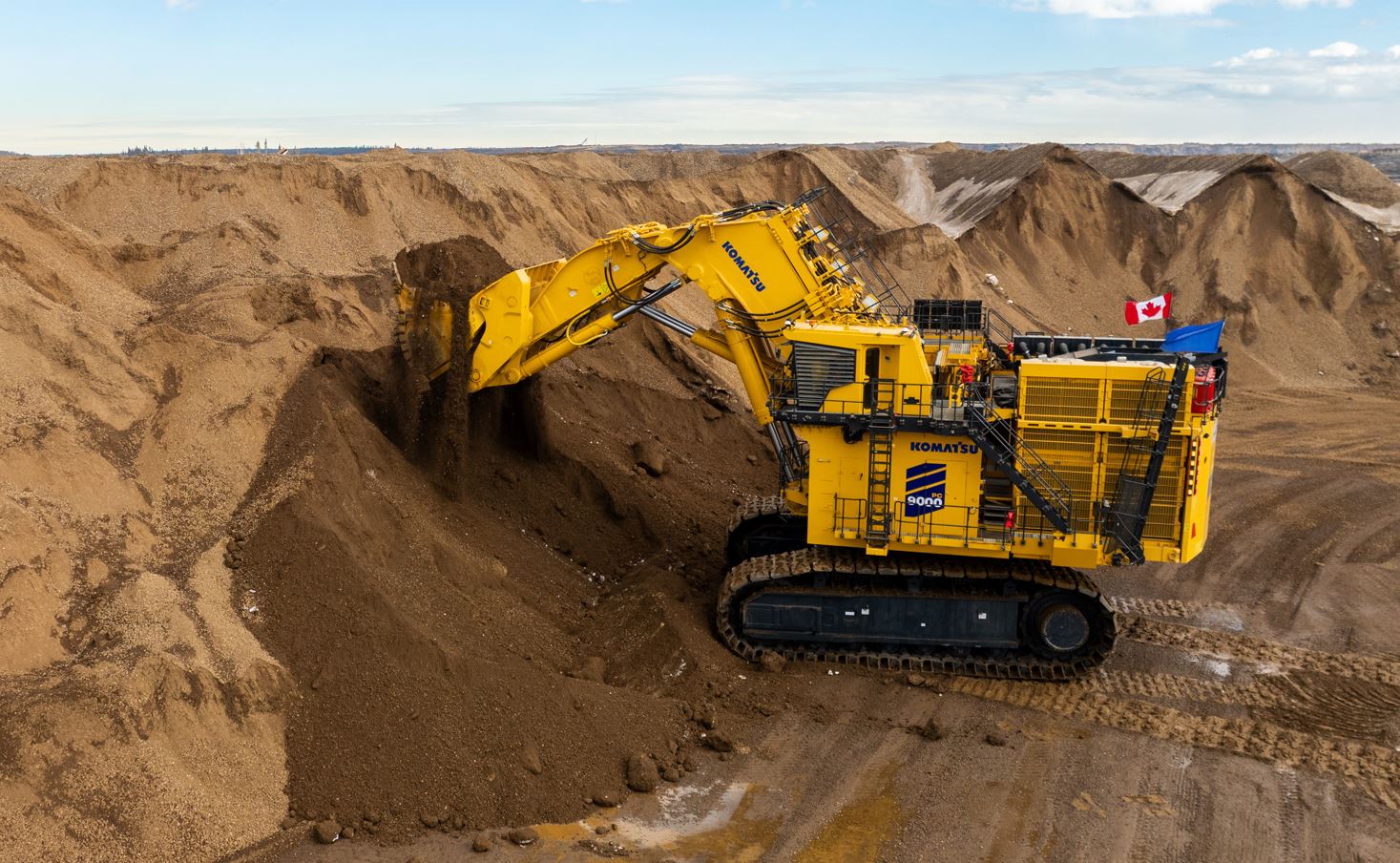
2nd - Caterpillar 6090 FS (1,000 tons)
The Caterpillar 6090 FS remains the absolute reference for operating weight with its 1,000 tons. This American colossus, born from the O&K experience acquired by Caterpillar, continues to dominate the world's most intensive mining operations.
The 6090 FS technical characteristics include an operating weight of 1,000 tons and a bucket capacity of 52 m³. It is equipped with dual Cummins QSK60 engines delivering 4,570 HP total that allow a travel speed of 1.8 km/h. The tank contains 16,500 liters of fuel, while dimensions reach 25.2 meters in length, 11.2 meters in width and 12.5 meters in height. Maximum digging depth is limited to 2.6 meters, with a maximum horizontal reach of 19.3 meters and a breakout force of 2,502 kN.
Available in both diesel and electric versions (6090 AC FS), this excavator can operate with a single engine while maintaining 65% of total production.
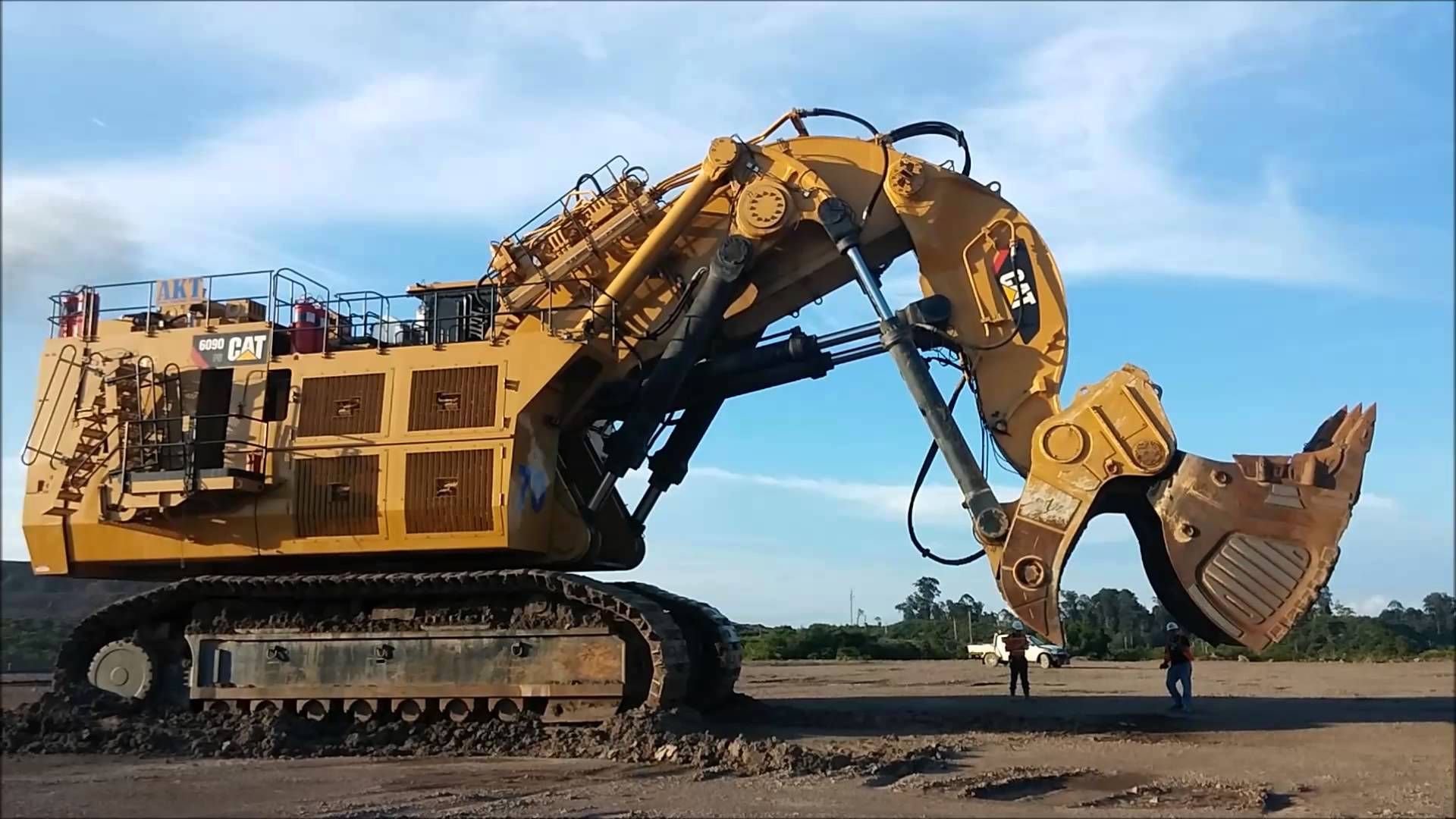
3rd - Liebherr R9800 (810 tons)
The Liebherr R9800, manufactured at the Colmar plant in France, holds the world record for bucket capacity in shovel configuration. This German-French monster represents European excellence in mining engineering.
The R9800 specifications show an operating weight of 810 tons with a bucket capacity of 45.3 m³. The motorization includes dual Liebherr D9816 engines delivering 4,000 HP total allowing a travel speed of 2.6 km/h. The 17,500-liter fuel tank powers a machine with dimensions of 23.9 meters in length, 10.5 meters in width and 11.7 meters in height. The excavator can dig up to 9 meters deep and lift loads up to 150 tons.
The machine is equipped with strategic lighting systems to ensure optimal visibility in all weather conditions and designed for simplified and safe maintenance.
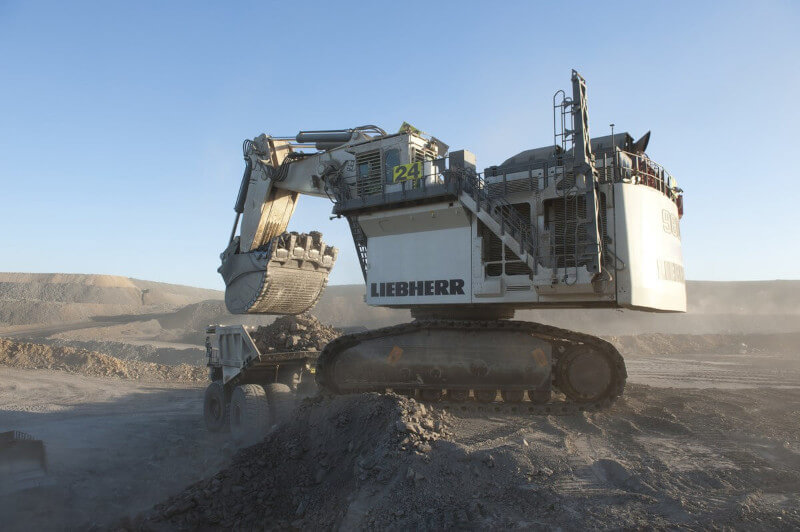
4th - Komatsu PC8000-11 (773 tons)
The evolution of Komatsu's PC8000 series, specifically designed for loading mining trucks over 240 tons. The -11 version introduces significant improvements in terms of efficiency and sustainability.
The PC8000-11 features an operating weight of 773 tons and a bucket capacity of 42 m³. It is equipped with dual Komatsu SAA12V170E-3 engines delivering 3,000 kW total that allow a travel speed of 2.4 km/h. The 14,000-liter tank powers a machine with dimensions of 14 meters in length, 10 meters in width and 9.6 meters in height. Maximum digging depth reaches 8 meters with a lifting capacity of 100 tons.
The machine integrates the Komtrax Plus system for advanced remote monitoring and predictive diagnostics.
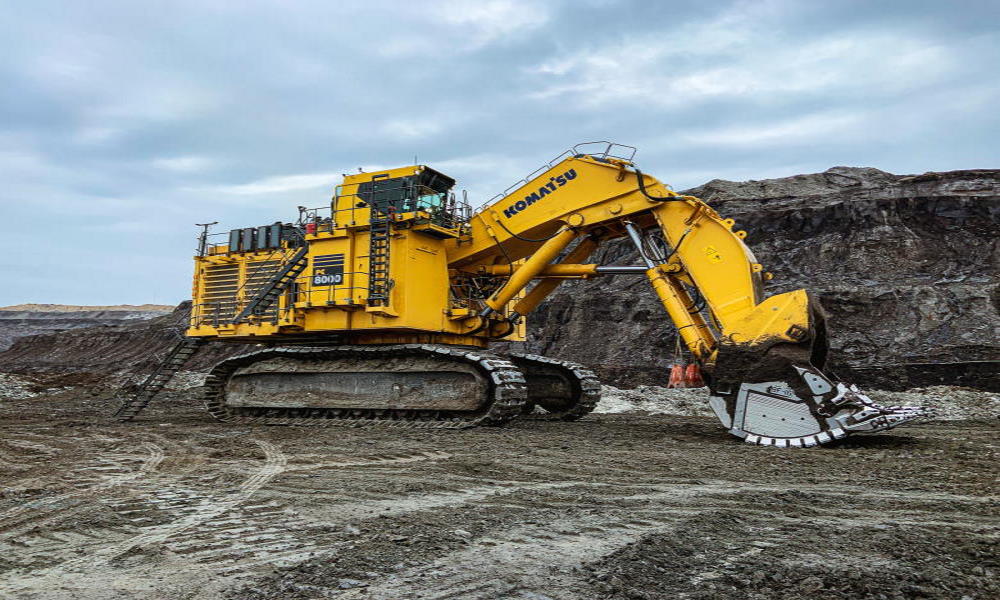
5th - Hitachi EX8000-7B (750 tons)
The evolution of Hitachi's celebrated EX8000 series, built in Japan to deliver high performance in extremely difficult working conditions. The 7B version introduces significant improvements in terms of energy efficiency.
The EX8000-7B reaches an operating weight of 750 tons with a bucket capacity of 43 m³. The motorization includes dual Cummins QSK60 engines delivering 3,890 HP total that guarantee a travel speed of 2.0 km/h. The 14,900-liter tank supports a machine with dimensions of 22 meters in length, 10.6 meters in width and 9.9 meters in height. The excavator can dig up to 8.4 meters deep and lift loads up to 150 tons.
The high power and elevated loading capacity allow executing large mining works with optimized production cycles.

Completing the ranking
6th - Liebherr R9600 G8 (650 tons)
The successor to the R996B represents the new Liebherr generation with a 19.6% increase in productivity. Introduced in 2021, this German excavator integrates Tier 4 Final compliant engines and develops 3,500 HP through the twin-engine configuration. With a 38 m³ bucket capacity and dimensions of 22.5 meters in length, it can dig up to 8.5 meters deep and lift 135 tons, making it ideal for intensive mining operations.
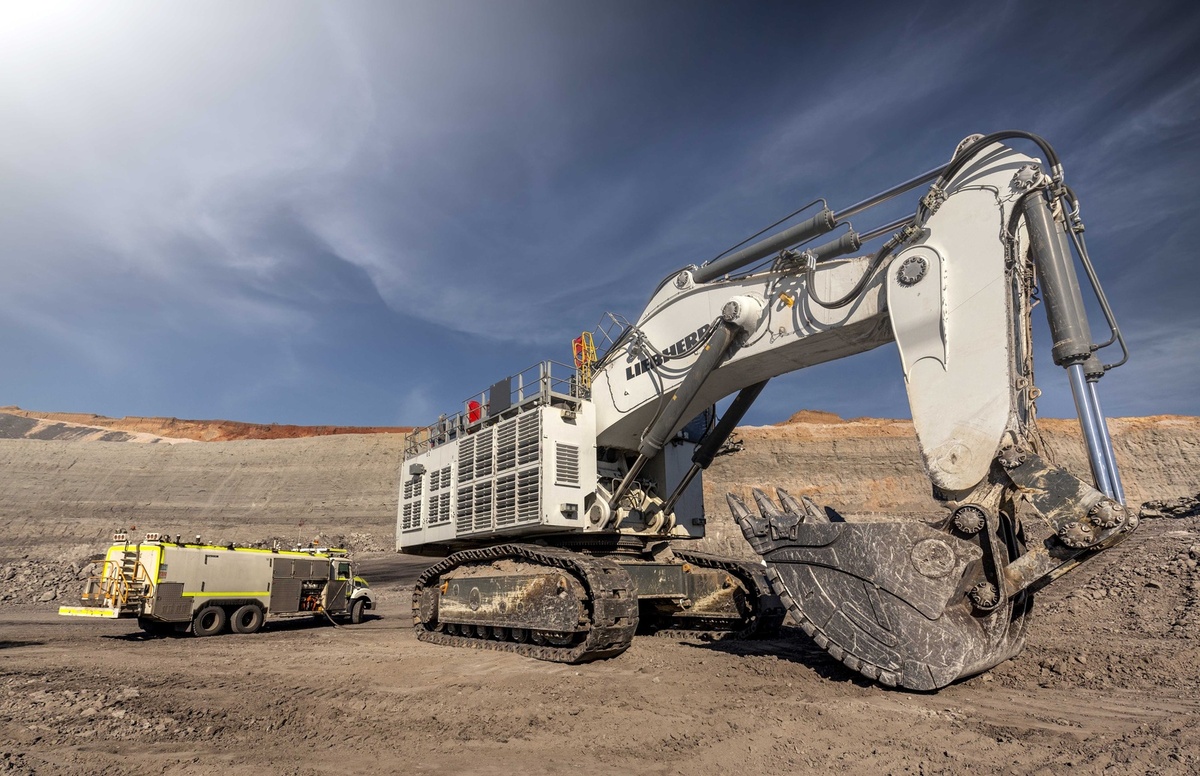
7th - XCMG XE7000 (672 tons)
The hydraulic excavator with the highest tonnage ever manufactured in China represents the technological advancement of the Chinese industry in the mining sector. With 672 tons of operating weight and dual engines delivering 3,600 HP total, this 23-meter-long colossus can operate with a 34 m³ bucket. Despite the limited digging depth of 3.8 meters, its lifting capacity of 120 tons makes it perfect for loading and material handling operations.
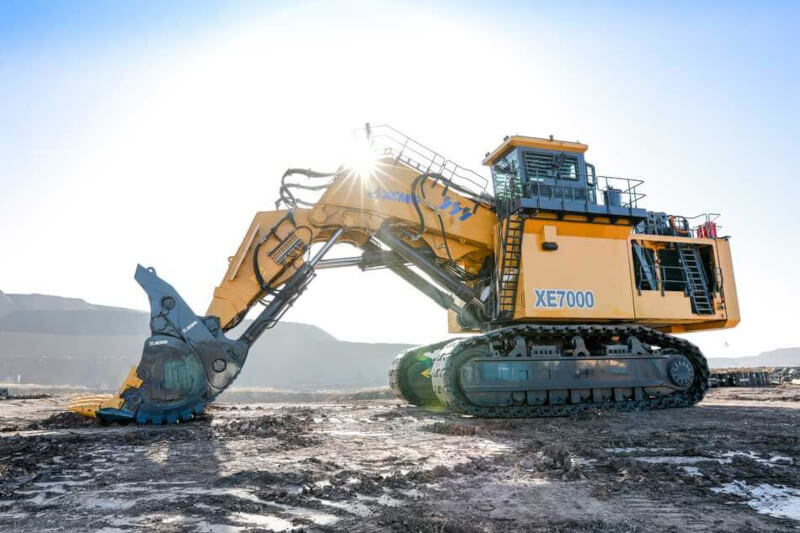
8th - Caterpillar 6060 FS (570 tons)
Manufactured in the United States for large-scale mining work, the 6060 FS represents an optimal balance between power and maneuverability. Equipped with a Cummins QSK50 engine delivering 3,000 HP and a 34 m³ bucket, this excavator can dig up to 8.9 meters deep. Its compact dimensions (12.5 x 8.7 x 8.8 meters) and integration of Cat MineStar technology for advanced fleet management make it extremely versatile in modern mining operations.
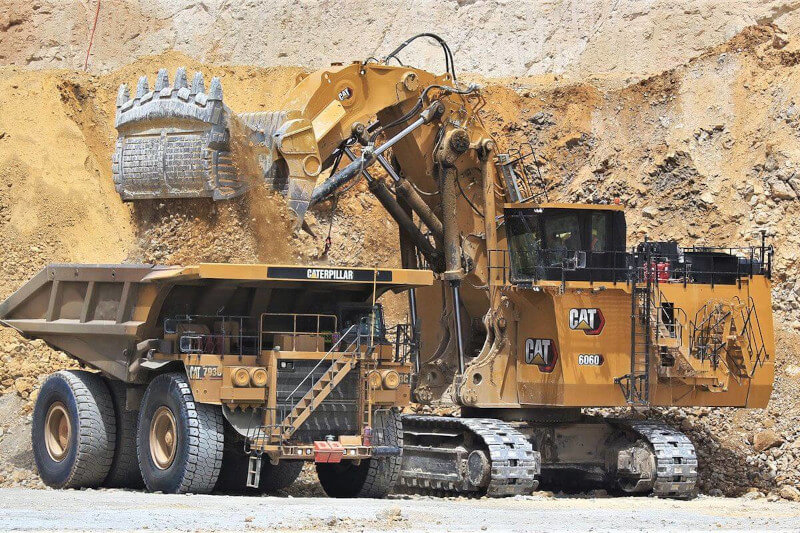
9th - Hyundai R1200-9 (118 tons)
This Korean excavator is designed to work with great precision despite its imposing dimensions. With 118 tons of operating weight and a Cummins QSM11 engine delivering 548 HP, it reaches a travel speed of 3.2 km/h. The 6.7 m³ bucket and 8-meter digging depth, combined with a lifting capacity of 43 tons, make it ideal for large construction and excavation projects.
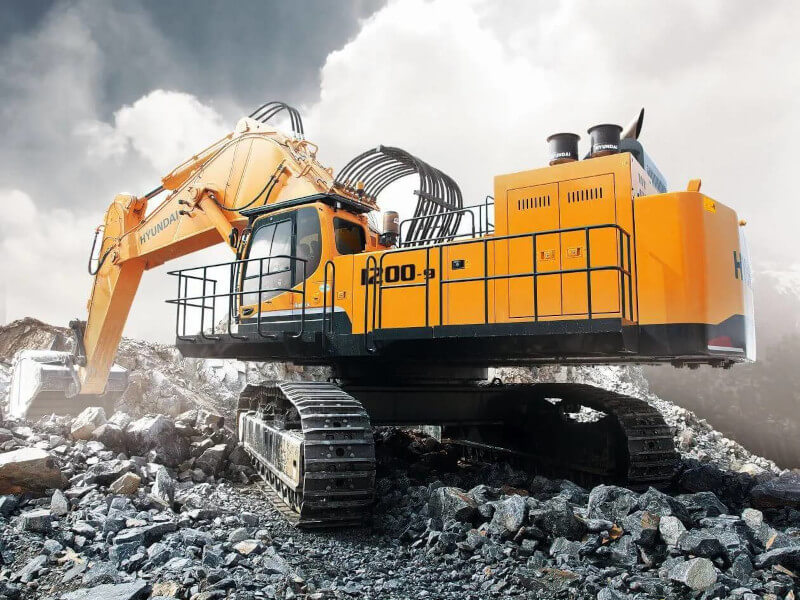
10th - Volvo EC950-F (92 tons)
Closing the top 10 is this Swedish excavator designed to deliver great productivity and efficiency. Equipped with a Volvo D16J engine delivering 600 HP and a 6 m³ bucket, the 14.6-meter-long EC950-F can dig up to 7 meters deep. Built with durable and wear-resistant components typical of the Scandinavian brand, it integrates advanced control systems to maximize operational efficiency with a lifting capacity of 37 tons.
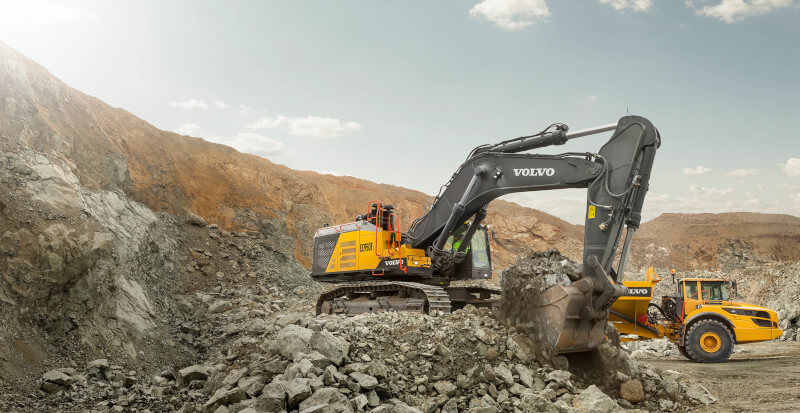
Why tracks are fundamental
Tracks have revolutionized the earthmoving machinery sector. In particular, rubber tracks have revolutionized the earthmoving machinery sector by transforming the operational paradigm from "brute power" to "intelligent versatility." Their importance transcends pure mechanical performance, embracing economic, environmental and comfort considerations that directly impact the productivity of modern construction sites.
Surface protection and operational versatility
The most immediate distinctive characteristic of rubber tracks is the uniform weight distribution that drastically reduces specific ground pressure compared to steel tracks. This fundamental physical property allows machines to operate on finished surfaces - asphalt, concrete, pavements - without causing structural damage that would require expensive post-construction repairs.
The intrinsic flexibility of rubber confers superior self-cleaning capabilities in muddy and debris environments. While steel tracks tend to accumulate material between links, compromising traction and control, rubber flexes naturally expelling mud, snow and debris during movement.
PowerTrack advantages over standards
The technology used in PowerTrack rubber tracks represents a significant evolution in the sector, implementing Continuous Steel Cord technology that eliminates the traditional weak points of standard systems. This structural innovation guarantees uniform tension distribution and superior resistance, fundamental characteristics also for supporting the performance of the largest excavators.
If you are looking for reliable ones for mini-excavators or earthmoving machines, rubber tracks are designed to guarantee maximum performance, just as happens for the large excavators in this ranking.
